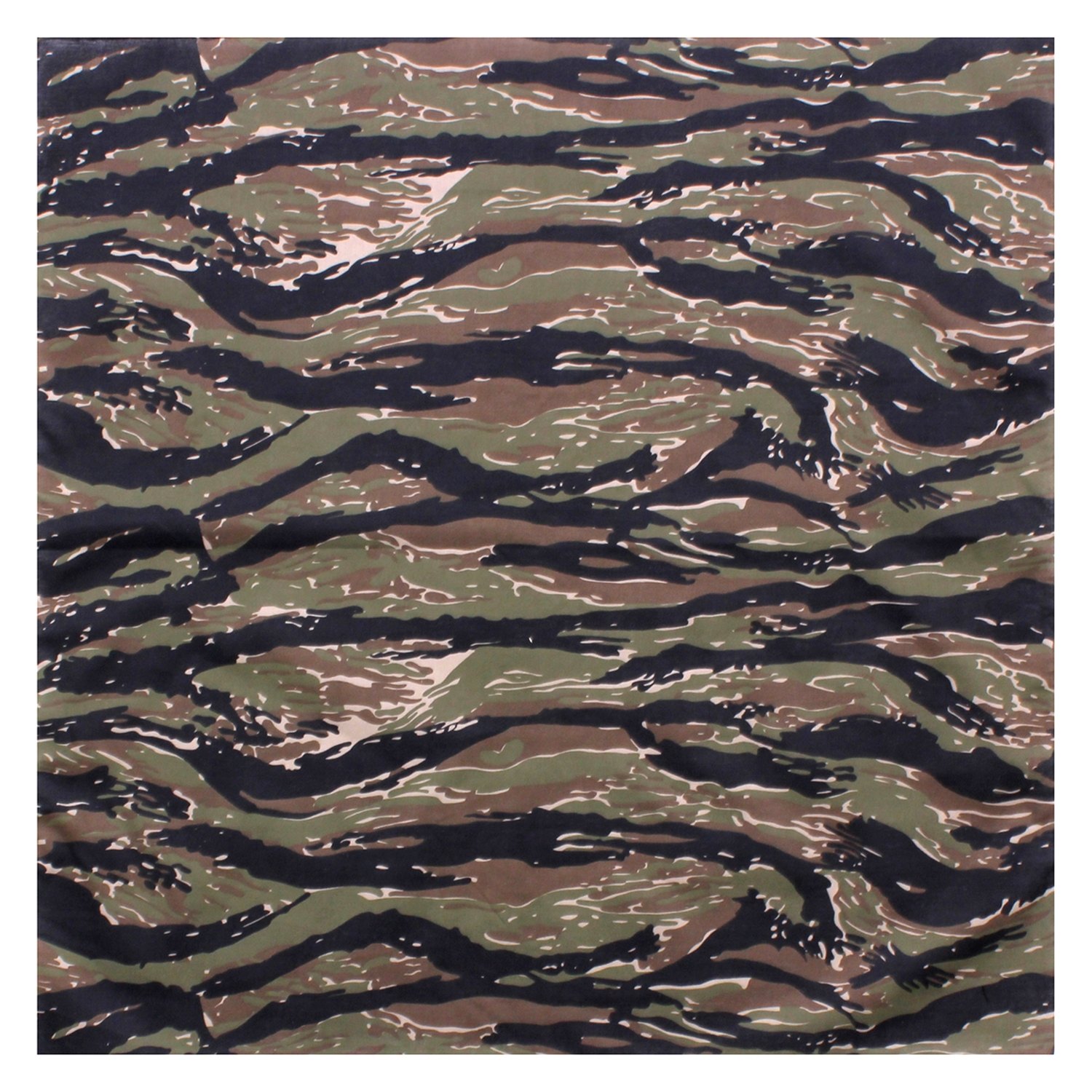


It was introduced circa 1964 and saw production until the end of the war.
The tiger pattern illustrated below has been named Tadpole Sparse pattern in Johnson's book. The "sparse" version of the pattern is seen to the left, and the "dense" version to the right. The pattern features bold black stripes over a background comprising dark green & dull brown with tan trace elements. Johnson has named this John Wayne pattern, owing to its specific use in the film The Green Berets starring John Wayne himself. The tiger patterns seen below emerged in 1962 and continued in production until 1975. Illustrated below are the original pattern (far left), followed by two variants designated "sparse" and "dense." Production of this design ended in 1967, although units continued to wear the pattern until 1970. The pattern incorporates bold black stripes over lesser brownish-drab stripes & light green trace elements, with an olive green base color. The very first tiger pattern was a locally-made copy of the French lizard pattern produced for the Vietnamese Marine Corps (Sọc Răn Thữy Quân Lục-Chiến). South Vietnamese Tiger Stripe Camouflage Patterns The term "tiger stripe" (or "tiger pattern") no doubt refers to the rudimentary similarity between the narrow brush strokes of the camouflage design and the naturally occurring hide design of the genus Panthera tigris. The Vietnamese referred to these different designs as Sọc Răn (striped uniform). French camouflage uniforms were in fact supplied to Colonial Vietnamese personnel during the First Indochina War. The term additionally refers to the multitude of derivatives produced by a number of countries well into the present period. The term "tiger stripe" refers to the family of camouflage designs developed in Southeast Asia (particularly the Republic of Vietnam) during the 1960s that were derived from the earlier French tenue du leopard or lizard design of the 1950s. 3 Other Tiger Stripe Camouflage Patterns. 2 South Vietnamese Tiger Stripe Camouflage Patterns. Until that happens, though, tigers have no reason to change their stripes. Marsupials have three, and birds and fish use four pigments for vision. After all, primates are not the only creatures that have three types of color receptors. The researchers were curious why evolution hasn't pushed prey mammals to become trichromats, like us and other apes. Sloths can sometimes appear green, but that’s due to the symbiotic relationship between a green algae that lives on the Central and South American animal’s fur, giving it some added camouflage. Red pigments are common in mammals' colorations while greens aren’t, so it is not surprising that no mammal has felt the evolutionary pressure to evolve some tone of jade in their fur or skin. 
"Hence predators (eg tigers), whose main prey is other mammals (eg deer), experience little evolutionary pressure to evolve green coloration from a trichromatic perspective.” “Based on our results and given that most non-human mammals have dichromatic color vision that is unable to reliably differentiate orange and green, it seems that there is little benefit to actually become green if the receiver is dichromat," the researchers wrote in their conclusion. They concluded that as long as your predator or prey can’t distinguish between orange and green, there’s no need to develop an emerald hue to hide in a forest. The researchers explain in the Journal of the Royal Society Interface how they employed a machine learning algorithm to simulate what the world looks like to dichromats, to work out the optimal colors for camouflage and concealment in animals. How different a tiger appears to dichromats and trichromats. Humans, on the other hand, are trichromats, meaning we have three color receptors that allow us to reliably differentiate between orange and green, hence tigers appearing orange to us. For them, tigers will match the surrounding forest pretty well. They struggle to distinguish between green tones and red-orange tones.

They have just two types of functioning color receptors in the eye, meaning they are red-green blind. These animals, like most mammals, are dichromats. Tigers' favorite meals are deer, boars, and other ungulates. Dugong "Sea Cows" That Inspired Mermaid Myth Have Been Declared Extinct In China








 0 kommentar(er)
0 kommentar(er)
